This is Dave's Roots/Causes page
Late in 1979, the Soviet Union invaded the country of Afghanistan in order to help secure the position of the newly-formed communist Afghanistan government. Originally, this war began as a civil war between the new government and its citizens. The Soviet Union helped its long term ally and marched forces into its neighboring country (Afghanistan). After nine years, one month, and eighteen days, the Soviet Union was forced to withdraw its troops from Afghanistan. The Soviet Union left defeated from a country that contained 655,000 square kilometers of land, eight-five percent containing mountains, with minimal road work and infrastructure (December 1-2).
History of the Soviet Union and Communism in Afghanistan
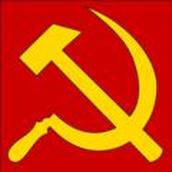
USSR Flag
To understand this country and the direction of this war, one must return to the very basics of this country. The borders of Afghanistan are nearly all arbitrarily drawn (Dick 2). Afghanistan contains more than twenty separate nationalities and distinct cultures. The separate tribes were often fighting and the only time they showed a semblance of unity was when another country threatened invasion. Of their large population, eighty-five percent lived off of agriculture. Eighty-five percent of Afghanistan’s population, 17 million people at the time, lived off of and owned their own land. They became particularly aggravated when the new communist government attempted to instate land reforms (December 5, 7).
In 1921, the Soviet Union helped Afghanistan fight and defeat an opposing British force. This played a large part in the Soviet Union recognizing Afghanistan as its own, separate nation. The two nations formed many treaties together and eventually formed a renewable ten-year non-aggression pact. The two countries resigned the pact four times; the final resigning took place in the year of 1975 (December 8).
A portion of Afghanistan’s military formed the People’s Democratic Party of Afghanistan (PDPA). This Marxist, communist organization took control of Afghanistan in 1978. When they took control, the PDPA claimed that they were not under Soviet control. They also claimed that they did not deviate from a Nationalist form of government, the Islamic justice system, a nonalignment system in foreign affairs, nor treaties signed by the former government (“Afghanistan” 1).
In 1921, the Soviet Union helped Afghanistan fight and defeat an opposing British force. This played a large part in the Soviet Union recognizing Afghanistan as its own, separate nation. The two nations formed many treaties together and eventually formed a renewable ten-year non-aggression pact. The two countries resigned the pact four times; the final resigning took place in the year of 1975 (December 8).
A portion of Afghanistan’s military formed the People’s Democratic Party of Afghanistan (PDPA). This Marxist, communist organization took control of Afghanistan in 1978. When they took control, the PDPA claimed that they were not under Soviet control. They also claimed that they did not deviate from a Nationalist form of government, the Islamic justice system, a nonalignment system in foreign affairs, nor treaties signed by the former government (“Afghanistan” 1).
Taraki
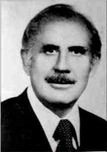
Nur Muhammad Taraki
Taraki, the new Prime Minister, announced a Marxist-Leninist reform program. This program gave full rights to women and ushered in land reform for agriculture. Slow to respond, peasant revolts began in the summer of 1978 (“Afghanistan” 1). Most of the rebels where recruited from Afghanistan refugees (December 9) although most of the rebel groups where never united (Dick 2).
Amin
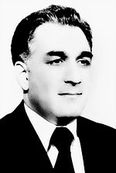
Hafizullah Amin
On the 28th of March in 1979, Hafizullah Amin rose to the power as a Prime Minister. Shortly after, Taraki was murdered in a confrontation with Amin’s supporters (“Afghanistan” 1). Shortly after, the Soviet Union sent military consultants to aid Amin and his attempt to suppress the rebels. When the consultants did not help the situation, Amin signed a Treaty of Friendship, Good Neighborliness, and Cooperation with the Soviet Union. This allowed Afghanistan to request for Soviet troops to aid in their cause of suppressing the rebels (December 10-11).
Afghanistan Support from Opposing Countries
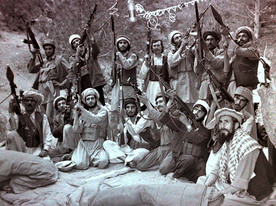
Afghanistan Rebels with USA supplied armaments
Both the rebels and the government received supplies from opposing nations. The rebels received their supplies and weaponry from the United States of America, China, Iran, Pakistan, and a majority of Western Europe. Since the insurgent groups where never unified, leaders in Iran decided to whom the weapons and supplies would be delivered. The main groups chosen where the four most Islamic fundamentalist rebel groups (Dick 3-4). Meanwhile, Russia provided armaments, individual units, and divisions for Afghanistan's government (December 9).
Invasion of Afghanistan
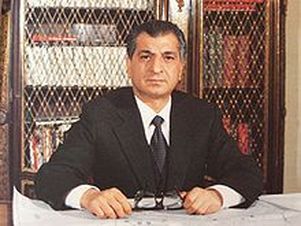
Babrak Karmal
On December 24th of 1979, the Soviet invaded Afghanistan. The communist leader of Afghanistan, Amin, died three days later. Karmal returned from the Soviet Union to Afghanistan and became the new Prime Minister of Afghanistan, President of the Revolutionary Council, and Secretary General of the PDPA. He led the government of Afghanistan and teamed up with the armies of the Soviet Union to fight the American and Western Europe backed rebels (“Afghanistan” 1-2).
Information Sources
"Afghanistan and Russia." Nova Online Home Page. Novaonline. Web. 27 Sept. 2011. <http://novaonline.nvcc.edu /eli/evans/his135/Events/Afghanistan79.htm>.
December, 28. "The Soviet-Afghan War." University Press of Kansas. University Press of Kansas. Web. 27 Sept. 2011. <http://www.kansaspress.ku.edu/grasovintroduction.html>.
Dick, C. J. "The Combatants." Mujahideen Tactics in the Soviet-Afghan War. [Camberley, Surrey]: Conflict Studies Research Centre, Royal Military Academy Sandhurst, 2002. 2-4. Edocs.nps..edu. Edocs. Web. 27 Sept. 2011. <http://edocs.nps.edu/AR/org/CSRC/csrc_jan_02.pdf>.
December, 28. "The Soviet-Afghan War." University Press of Kansas. University Press of Kansas. Web. 27 Sept. 2011. <http://www.kansaspress.ku.edu/grasovintroduction.html>.
Dick, C. J. "The Combatants." Mujahideen Tactics in the Soviet-Afghan War. [Camberley, Surrey]: Conflict Studies Research Centre, Royal Military Academy Sandhurst, 2002. 2-4. Edocs.nps..edu. Edocs. Web. 27 Sept. 2011. <http://edocs.nps.edu/AR/org/CSRC/csrc_jan_02.pdf>.
Image Sources
- http://www.xtimeline.com/evt/view.aspx?id=499014
- http://en.wikipedia.org/wiki/Nur_Muhammad_Taraki
- http://www.us-foreign-policy-perspective.org/index.php?id=322
- http://en.wikipedia.org/wiki/Babrak_Karmal
